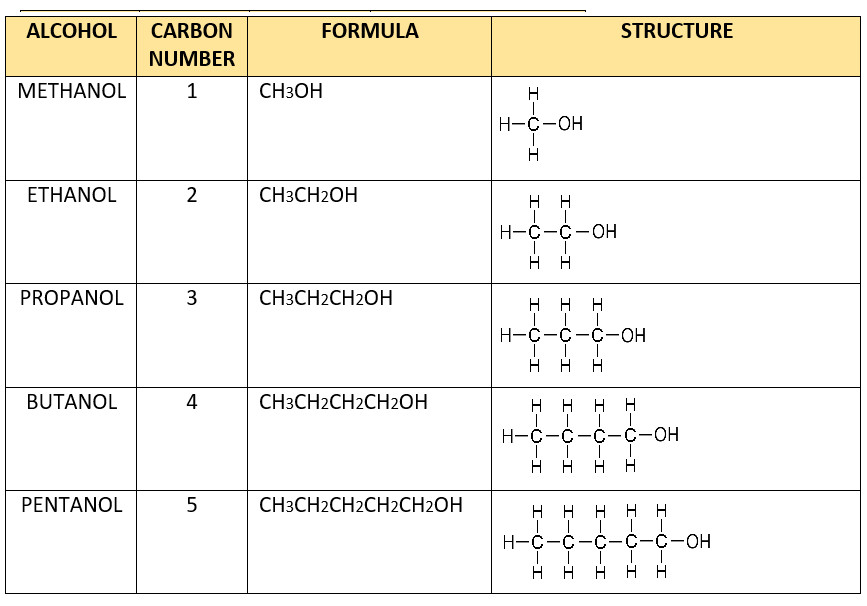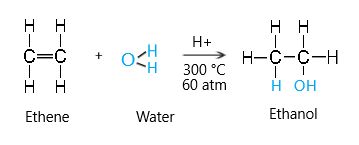Properties of alcohols
Alcohols have the general formula:
![]()
All alcohols have the -OH functional group and their names end with -ol.
Alcohol homologous series 
Ethanol manufacture
Ethanol can be manufactured by two methods:
- Catalytic hydration of ethene
- Fermentation
Hydration of ethene (ethylene)
This has been covered before in the topic of ‘alkenes‘.
Water can react with alkenes to make alcohols. This type of reaction is called hydration.
The conditions required for this reaction are:
- Temperature 300 degrees
- Pressure 60 atmospheres
- Phosphoric acid catalyst

The advantages of hydration (for ethanol manufacture) are
- No waste products
- Produces ethanol continuously
The disadvantages are
- Use of crude oil which is non-renewable
- Requires a lot of energy for high heat and pressures
Fermentation
Fermentation is the chemical breakdown of glucose by yeast (or other microorganisms). Carbon dioxide and ethanol is produced in the process and the reaction is catalysed by yeast enzymes.
![]()
The advantages of fermentation
- Renewable (uses plants)
- Uses less energy (lower temperature & pressure)
The disadvantages are
- Slow, batch process i.e. needing new batch once yeast die
- Produces carbon dioxide as waste
Properties & uses of ethanol
Ethanol burns with blue flame. Combustion of ethanol will produce carbon dioxide and water.
![]()
Ethanol can be used:
- As a fuel (i.e. combusted)
- as a solvent in perfume and food industries
- In some cultures in alcoholic drinks
- To make other organic chemicals such as esters